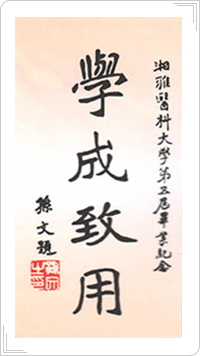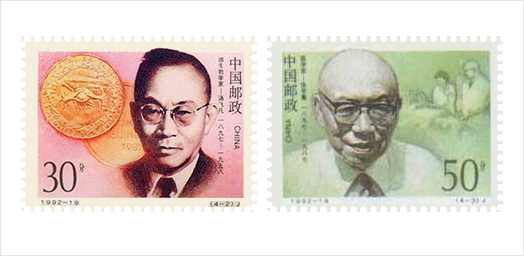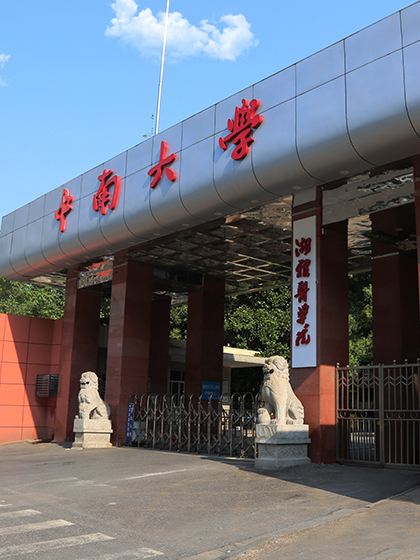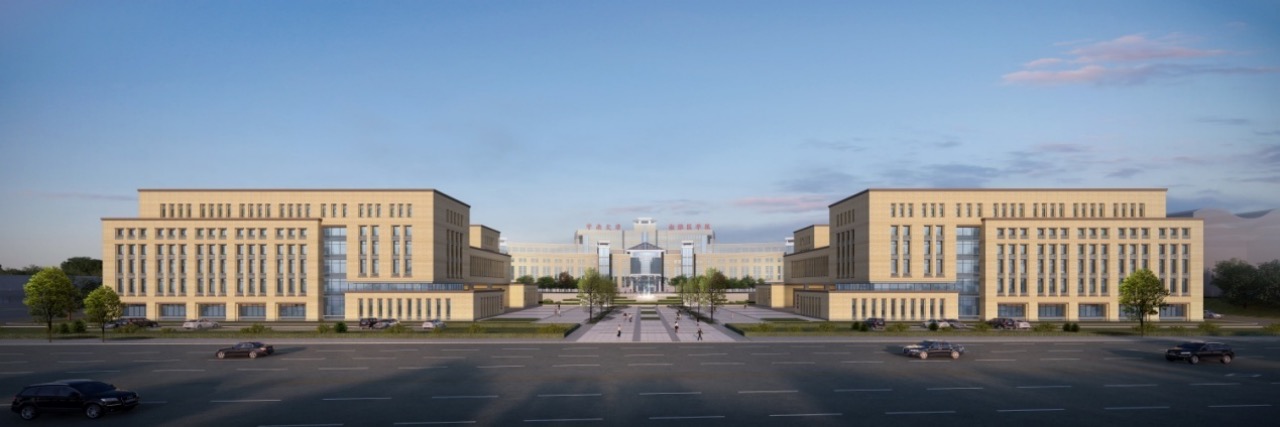Established in 1914, Xiangya School of Medicine at Central South University stands as China’s pioneering Sino-foreign cooperative medical school. In 1925, Sun Yat-sen penned the inspirational motto “Learn and Apply” for Xiangya’s fifth graduating class. During the May Fourth Movement, Mao Zedong served as the chief editor of the “New Hunan” magazine. In the 1950s, Mao Zedong frequently corresponded to introduce friends and family seeking medical treatment to Xiangya.

Renowned for its rigorous academic traditions, Xiangya School of Medicine has nurtured influential medical experts like Tang Feifan, Zhang Xiaoqian, Xie Shaowen, and Li Zhenpian. With outstanding levels of teaching, research, and medical care, Xiangya once earned the accolade “South Xiangya and North Peking Union”. In 1992, to commemorate scientific giants who made outstanding contributions to the nation, China issued commemorative stamps for modern scientists. Among the honored medical scientists were four individuals, two of whom were alumni of Xiangya School of Medicine. These distinguished alumni were microbiologist Tang Feifan and internist Zhang Xiaoqian.

Spanning 425 acres and overlooking Yuelu Mountain to the south while bordering the Xiang River to the east, Xiangya School of Medicine offers 14 undergraduate majors, including Clinical Medicine (5-year and 8-year programs), Anesthesiology, Psychiatry, Medical Laboratory Technology, Stomatology (5-year and “5+3” integrated programs), Preventive Medicine, Basic Medicine, Forensic Medicine, Biomedical Engineering, Pharmacy, Nursing, Biological Science, and Medical Informatics. It comprises 6schools:the School of Basic Medicine, Xiangya School of Public Health, Xiangya School of Nursing, Xiangya School of Stomatology, Xiangya School of Pharmacy, and the School of Life Sciences. Additionally, there is an affiliated department under the Experimental Animal Center. Xiangya School of Medicine is affiliated with 4 hospitals: Xiangya Hospital, Xiangya Second Hospital, Xiangya Third Hospital, and Xiangya Stomatology Hospital. It also collaborates with 6 non-affiliated hospitals, includingthe Affiliated Hunan Cancer Hospital, Hunan Children’s Hospital, Haikou Hospital, Changsha Hospital, Zhuzhou Hospital, and Changde Hospital.In total, there are 16 clinical teaching hospitals, 11 preventive medicine practical teaching bases, and 16 community health service practice bases supporting programs in clinical medicine and preventive medicine. In total, there are 16 clinical teaching hospitals, 11 preventive medicine practical teaching bases, and 16 community health service practice bases supporting programs in clinical medicine and preventive medicine.
Xiangya Schoolof Medicinecurrently hosts 8 first-level doctoral programs, 9 first-level master’s programs, and 7 first-level professional degree authorization points. It boasts 15 national-level research platforms, including 3 national engineering research centers, 3 national clinical medicine research centers, 2 national international science and technology cooperation bases, 3 national-local joint engineering laboratories, and 4 university discipline innovation intelligence bases. At the provincial and ministerial levels, there are 135 research platforms.Xiangya School of Medicineexcels in 8 national key disciplines:pathology and pathophysiology, genetics, pharmacology, psychiatry and mental health, neurology, surgery (thoracic and cardiovascular surgery), internal medicine (endocrinology and metabolic diseases), and otorhinolaryngology. Additionally, there is one nationally key (cultivation) discipline in general surgery. It participates in 80 national clinical key specialties and construction projects. In terms of medical disciplines, including biology and biochemistry, neuroscience and behavior, psychiatry and psychology, molecular biology and genetics, immunology, and microbiology, theschoolranks among the top 1% in the Essential Science Indicators (ESI), while clinical medicine, pharmacology, and toxicology are within the top 1‰ of the global ESI subject rankings.

Xiangya School of Medicine follows the strategy of strengthening the school with talent and has a robust faculty. It currently has over 10,000 enrolled students and almost 10,000 faculty and staff members. Among them are more than 2,000 professors and associate professors,473 in-service doctoral supervisors, 1,046 in-service master’s supervisors and 21 foreign full/part-time doctoral supervisors.The faculty includes 3 academicians of the Chinese Academy of Sciences and Chinese Academy of Engineering, 13 Changjiang Scholars,9 recipients of the National Science Fund for Distinguished Young Scholars, 33 young talents in the Four Youth Talents Plan, 6 participants in the National Ten Thousand Talents Program, 4 national-level teaching masters,3 chief scientists of the Program 973, 3 national-level teaching teams, and 2 innovative teams recognized by the Ministry of Education.

The teaching at Xiangya School of Medicine is renowned for its rigor. Since its establishment, the school has nurtured tens of thousands of outstanding talents for the healthcare industry, including 12 academicians from the Chinese Academy of Sciences and the Chinese Academy of Engineering. The classes of '77, '78, and '79 achieved a three-time consecutive victory in the national unified examination. In 1994, during the nationwide examination for 17 medical schools organized by the National Health Commission, the school secured the first position. In 2002, the seven-year clinical medicine program underwent evaluation by the Ministry of Education and received an excellent rating. From 2012 to 2018, the school won the top prize six times in the finals of the “National Clinical Skills Competition for College Students in Higher Medical Colleges and Universities”. The school currently has two national-level innovative experimental zones for talent cultivation, two national-level characteristic majors, 18 first-class undergraduate courses since 2019, nine international online courses, 11 national-level teaching platforms, six multidisciplinary teaching platforms, two national-level experimental teaching demonstration centers, and four national university off-campus practice bases. It was one of the first five institutions in China approved by the Ministry of Education to implement an eight-year medical education program. The clinical medicine program received certification from the Ministry of Education in 2010 and 2020. In 2012, the school was approved by the Ministry of Education and the National Health Commission as one of the first pilot institutions to implement the “Outstanding Physician Education and Training Program”. Graduates from our medical program have been highly sought after by society, with an employment rate consistently above 96% over the years.

Xiangya School of Medicine has achieved remarkable milestones in research and innovation. With a commitment to global scientific frontiers, economic battlegrounds, and addressing crucial national needs, the school has prioritized original basic research and the development of key core technologies. Notable successes include the establishment of the National Engineering Research Center for Personalized Diagnosis and Treatment Technology and the Hunan Province Furong Laboratory (Precision Medicine). The focus on building innovative teams, combining individual exploration with organized research efforts, has been a cornerstone. During the “13th Five-Year Plan” period, there was a steady increase in the total number of projects approved by the National Natural Science Foundation. The school undertook 72 national-level major projects, securing a total funding of 4.2 billion yuan. It also obtained nearly 2,000 projects from provincial and ministerial-level research initiatives. The substantial growth in overall research funding reached an accumulated total of 14 billion yuan. The school received 7 national-level awards, with the first author winning 3 second prizes for the National Science and Technology Progress Award. Additionally, it earned 87 awards at the provincial and ministerial levels. Numerous original achievements have consistently been published in renowned journals such as Nature and Science, indicating a positive trajectory. Several transformational outcomes serving the forefront of the economy have emerged, showcasing the continuous enhancement of the ability to convert scientific research into productivity. The school’s international academic influence has been on the rise, with over a hundred patents for transformative or applicable inventions, including two projects with transformation contract amounts exceeding one hundred million yuan.
Xiangya School of Medicine is renowned for its cutting-edge medical technology, and its affiliated hospitals are considered leaders in the national healthcare landscape. In the 2020 National Performance Assessment for Tertiary Public Hospitals, Xiangya Hospital secured the 7th position nationwide, earning an A++ rating. Xiangya Second Hospital ranked 22nd, achieving an A+ rating, while Xiangya Third Hospital claimed the 45th spot, also with an A+ rating. In the 2022 Chinese Medical University/Hospital Science and Technology Evaluation Metrics (STEM), Xiangya School of Medicine ranked 10th nationwide. Xiangya Hospital secured the 8th position, Xiangya Second Hospital ranked 21st, and Xiangya Third Hospital was placed at the 84th spot. According to the 2022 China Hospital Ranking, Xiangya Hospital, Xiangya Second Hospital, and Xiangya Third Hospital secured the 13th, 20th, and 72nd positions, respectively, at the national level. Among the affiliated hospitals, 18 specialized departments achieved top-10 rankings nationwide. Notably, three departments, namely Dermatology (Xiangya Hospital), Clinical Pharmacy (Xiangya Hospital), and Health Management (Xiangya Third Hospital), claimed the top spot in standardized research value nationwide.
Xiangya School of Medicine is actively involved in international exchanges, consistently implementing the “8-Year Medical Student Leading Talent Training Innovative Driving Plan”. Emphasizing collaborative education both domestically and internationally, the school sends eight-year medical students annually to renowned universities like Yale University, the University of Michigan, Emory University, and the University of Pittsburgh. This initiative aims to advance a new model of dual-degree programs, fostering cooperation between domestic and foreign institutions. In 2019, the school signed an MD+PhD dual-degree training agreement with the University of Michigan. Relationships with organizations like the Yale-China Association, the China Medical Board, and the Xiangya Overseas Alumni Association continue to strengthen, fostering close academic exchanges with the United States, Japan, Europe, and other regions. Leveraging programs such as joint doctoral training, student exchanges for overseas study, programs for foreign students studying in China, and the development of entirely English-language courses, the school is advancing the globalization of medical education in full swing.

The teaching building group of Xiangya New Campus, of which the Xiaqian Building and Fuqing Building were awarded the “China Construction Engineering Luban Award” (National Quality Project) in 2003
(Updated in November 2023)